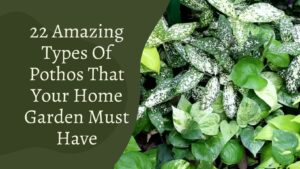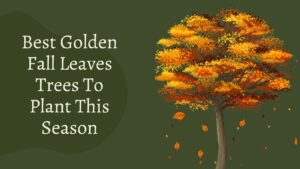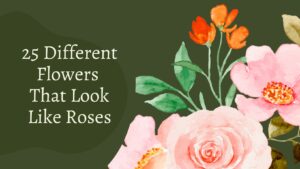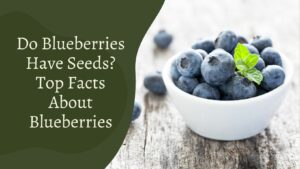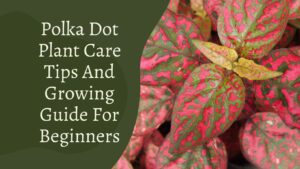
You are probably here to know about tradescantia nanouk care which is pretty much as same as angel plant care, this article provide you all information regarding that. Fantasy Venice, also known as Tradescantia Nanouk (Tradescantia albiflora ‘Nanouk’), is a rare variety of spiderwort plant that’s become a must-have for plant enthusiasts. Its luscious leaves include pink, white, purple, and green patterns on tall stalks.
It may develop as a long trailing ivy under the correct conditions, and little white and yellow flowers will emerge from its pink buds during the growth season. Tradescantia Nanouk is a fast-growing, robust plant.
This plant was made with the goal of being colourful, appealing, and easy to grow. When it comes to Tradescantia and Zebrina plants, Nanouk is unique because it is a plant that has been patented. It was made in the Netherlands in 2012. Because of a project to make Tradescantia more hardy and strong, this plant was made.
Nanouk is a Tradescantia albiflora seedling hybrid that was created by cross-pollinating two Tradescantia albiflora seedlings. Various naturally occurring Tradescantia plant kinds can be found in temperate parts of Mexico, South and Central America. Nanouk, on the other hand, is from Sappemeer, the Netherlands, where it was created.
Types:
They’re wonderful for both new and expert houseplant gardeners because they’re inexpensive, easy to propagate, and low-maintenance. Choosing various selections from the ten possibilities provided might not be a terrible idea if you want a complete explosion of colour in your house.

Purple Heart Tradescantia
This Tradescantia kind is regarded as one of the most lovely. Purple leaves may be seen on both the upper and lower levels. It is a stunning plant for an aesthetic effect in the house because of its thin, narrow, and pointed purple leaves.
Purpleheart plants are commonly cultivated as indoor houseplants because of their vibrant and beautiful hue. They give splashes of colour to any room in the house, especially when placed in colourful pots and prominent settings.
Because the Tradescantia Purpleheart is a trailing plant, it may be displayed in dangling baskets or on hanging shelves for a better perspective. They produce little clusters of petal blooms during their blooming period. They demand strong light to maintain their vibrant leaf colour and strength, but they are low-maintenance plants.
Make sure they have access to bright indirect sunlight from their position in your home. Moderate watering, wet organic soil, strong indirect sunshine, proper containers, and appropriate temperature conditions are all necessary for them to grow. They may reach a height of 18 inches if properly tradescantia nanouk care for.
Zebrina Tradescantia

The Tradescantia Zebrina’s lance-shaped leaves create a seductive impression in any environment. Because it is a trailing plant, the multicoloured plant has a blend of green and purple and creates a fantastic ground cover.
Most growers, on the other hand, cultivate them as indoor plants that may be used to compliment the home’s interior design.
This plant’s leaves colour isn’t its only appealing characteristic; in the spring, it blossoms and produces rose-like flowers, albeit this is only reserved for Tradescantia Zebrinas cultivated outdoors. As a trailing plant, this plant can reach a height of 9 inches.
When there is a complete mass of this type, their beautiful influence on any home is recognised. The majority of growers like a bushy Tradescantia Zebrina plant, thus they snip off small pups on a regular basis. This is a method for speeding up the growth of your Zebrina plant.
If you combine this strategy with the application of an acceptable amount of fertiliser to the Tradescantia Zebrina plant, you will have a bushy Zebrina. This plant should be well hydrated, but not so much that the soil becomes swampy, since this might cause root rot.
Burgundy Tradescantia
The Tradescantia Burgundy plant is one of the most beautiful types of the Tradescantia plant, according to houseplant producers. This plant’s large burgundy leaves immediately fascinate passers-by in any environment. This trailing plant may be cultivated as a typical houseplant, but it will need to be pruned frequently.
When Tradescantia Burgundy is planted in vividly coloured pots, it becomes even more beautiful. Because they are prominent houseplants, their attractiveness is muted when they are placed in inconspicuous areas. This plant is low-maintenance, inexpensive, and easy to reproduce.
Growers are supposed to sprinkle their leaves on a regular basis to maintain their vibrant colour, remove dust, and increase the humidity level in the atmosphere.
This type will need to be put in an area with enough lighting. The easiest way to destroy the Tradescantia Burgundy’s outstanding colour and leaf vigour is to deprive it of enough lighting. If your home’s position prevents you from getting enough sunshine, utilise artificial lighting such as bulbs and lights.

Lilac Tradescantia
The term “Wandering Jew Lilac” is widely used to describe this cultivar. The Tradescantia’s distinctive leaf pattern makes it a popular choice among houseplant producers. This plant’s primary hues are lilac and various shades of green. The striped leaf plant may be used as a conventional or trailing houseplant. This plant may reach a height and breadth of 2 feet.
Young tendrils can be snipped off to stimulate rapid development and a bushier plant. They will flourish if they are given their fundamental growth requirements, which include moderate watering, organic soil, a suitable container, and a warm atmosphere.
Before watering the plant, make sure the soil isn’t entirely dry. This will damage the colour and vitality of the leaves. Depending on the temperature of your area, they should be watered at least once a week. This cultivar is available for purchase at local nurseries or through internet plant retailers.

Stripes in Pink
It is one of the most unique types of Tradescantia. It has pink stripes. People know this plant because of the pink tones in the leaf. As long as the plant is thin, it can be grown both indoors and outside. Houseplant gardeners prefer to start the plant indoors. Because this kind is so rare, it costs more than other types.
This cultivar is available for purchase through online plant retailers. If you want to speed up the growth of your Tradescantia plant, don’t use fertilisers right away. Allow time for the plant to acclimate to the temperature in your house. Environmental shock is a phenomenon in which a plant is harmed by a temperature fluctuation.
If the plant is not properly tradescantia nanouk care for, it might result in dropping leaves or insufficient growth. Pinch back early pups to promote bushy development if you want a complete mass of Pink stripes. This type requires enough watering, preferably once a week, wet soil, and a warm atmosphere to thrive.
Andersonia Tradescantia Blushing Bride
This is one kind that, no matter where it is in the house, cannot go ignored. The foliage of this gorgeous plant is a blend of green and white; other types have green and pink leaves. When they’re bushy and well-pruned, this variety’s beauty shines through.
They may be cultivated both indoors and outdoors. Blushing Bride plants planted outdoors have the extra benefit of producing lilac petals throughout bloom season. They would have a significant impact on your home’s interior design.
If you care about the beauty of your house, utilise vividly coloured pots to improve their appeal. Make sure the pot you choose is adequately drilled to allow for good water drainage. If the soil becomes flooded as a consequence of overwatering, wait until the soil is practically dry before watering again.
The Blushing Bride plant, like most others, is simple to grow and maintain. Because this is a trailing houseplant, you should think of unique methods to exhibit it in your home.
Tricolor Tradescantia
Any day, a striped coloured houseplant will attract your attention. Green, white, and pink are the three primary hues of the Tradescantia Tricolor. The Caribbean, Mexico, and South America are the origins of this cultivar. Both indoor and outdoor houseplants can be propagated.
They flourish in temperatures ranging from 65 to 75 degrees Fahrenheit. They may reach a height of 9 inches and a width of 24 inches if tradescantia nanouk care properly. The essential requirements of the Tradescantia Tricolor are appropriate sunlight, adequate watering, organic soil, the gentle use of liquid-based fertiliser, and warm settings.
To maintain its spectacular leaves colour and vitality when cultivated indoors, the Tradescantia Tricolor has to be kept in a light atmosphere.
If planted outdoors, keep an eye out for pests like as spider mites, aphids, and mealybugs, since this species is prone to them.
Because the Tradescantia Tricolor is extremely hazardous, it should be kept out of reach of children and dogs. Because direct contact with the sap might induce unpleasant responses, growers are encouraged to use gloves when caring to this plant.
Tradescantia Red gem
Due to its crimson leaves colour, this appealing lot is a one-of-a-kind variety. Most Tradescantia types are green, white, or pink in colour, however the Tradescantia Red gem is different. If you choose drab or ordinary pots, the attractiveness of this plant will be diminished. Use appealing containers for potting and discover how much colour this plant can provide to your space. When properly hydrated, kept out of draughts, and placed in brilliantly illuminated regions in warm temperate climates, this plant will blossom. If your surroundings isn’t humid enough, water the leaves of this plant on a regular basis; if it isn’t, humidifiers can help. The best places in the house for this plant are near windows or areas with artificial light. The beauty of your Tradescantia Red Gem is preserved with proper illumination.
Tradescantia Fluminensis (Fluminous Tradescantia)
The leaf of this species ranges in colour from green to lemon, cream, and white. This plant coils gracefully as it matures and begins to trail. This flurry variety is simple to tradescantia nanouk care for and is an excellent choice if you’re new to houseplant gardening. The Tradescantia Fluminensis requires damp soil that must be irrigated often. Despite their drought tolerance, they should not be left without appropriate water for lengthy periods of time. In addition, they should not be overwatered, since this might cause root rot. Their leaves must be misted on a regular basis to keep the plant moist. They look great in dangling baskets or on hanging shelves throughout the house. The ideal temperature for the Tradescantia Fluminensis is between 65 and 75 degrees Fahrenheit. Pinning early growth encourages the Tradescantia plant to produce additional stems, resulting in a bushy yet attractive houseplant for you.
Baby Bunny Ears from Tradescantia
The fuzzy leaf and trailing stem of this plant, while not as vibrant as other species, quickly capture visitors. Unlike other varieties with narrow and long leaves, the compact size of the leaves compensates for its seemingly regular colour. They are popular cultivars that are simple to cultivate and tradescantia nanouk care for.
This plant grows bushy in a short amount of time, especially if it is clipped periodically. This implies that the plant must be appropriately hydrated so that no part of it goes without enough water.
The Baby Bunny Ear plant should be positioned where it will receive strong indirect sunlight. If planted outdoors, they should be put in shady regions to avoid direct sunshine while yet receiving enough light to flourish.
To keep your Baby Bunny Ears plant’s leaves looking good and extending its life, make sure it’s cultivated in a pest-free area.
What similarities do Mitochondria and Chloroplast share?
The best conditions for growing Tradescantia Nanouk Tradescantia Nanouk thrives at temperatures as high as 75 degrees during the day, with nighttime temperatures ideally in the mid-50s. You’re probably overwatering if you see yellowing leaves and rotten roots. Wilted leaves, on the other hand, might indicate that you’re submerged. When potting your Tradescantia Nanouk, use a regular, well-draining houseplant soil. Adding a few handfuls of perlite, orchid bark, or coarse sand to the mix can help with drainage. To protect domestic surfaces, use a pot or container with a hole in the bottom and a drainage tray.
Is Tradescantia Nanouk poisonous?
Pets and children are both poisoned by Tradescantia Nanouk. Make that the pot is out of their reach.
To preserve the rich hues of its leaves, Tradescantia Nanouk requires strong indirect light, well-draining soil with orchid bark, perlite, and some horticulture sand, and watering from below to protect the leaves from rotting. Water every two to three weeks. The temperature should be between 60 and 75 degrees Fahrenheit (16 and 24 degrees Celsius). It’s best if the humidity level is between 40 and 60 percent. In the spring and summer, fertilise regularly using a balanced fertiliser diluted to half strength.
Soil
Tradescantia “Nanouk,” like other Tradescantias, prefers free-draining soil with no damp roots. For houseplants, you may use any good-quality commercial soil mix, but your plant will benefit from the addition of orchid bark, perlite, and horticultural sand.
Because compacted soil can induce root rot, it is critical that the soil be light. You may learn how to manufacture good potting mix on your own.
Watering
The difference between a happy, healthy plant and a sad, fading one with decaying leaves comes down to how well you water your Tradescantia Nanouk. It is not a good idea to water your Nanouk from above due to its thick growth and densely furled leaves. The water trapped in the leaves will very certainly cause the leaves to decay.
You may water it from above by pouring water into the soil and avoiding contact with the foliage. You may also water the plant by soaking the entire pot in lukewarm water for about an hour and then draining the surplus water through the opening in the pot onto a drip tray.
Touch the soil with your fingertips to see whether your Tradescantia “Nanouk” needs to be watered.
If the first several centimetres (about an inch) of soil are dry, wet it well. Otherwise, you should wait a few days. Water your plant every two to three weeks throughout its busy growing season in the spring and summer.
In the fall and winter, you’ll notice that it requires far less water. Also, plants that receive northern light require less irrigation.
Light

Because Tradescantia “Nanouk” thrives in strong, indirect light, position it near a north or east-facing window if possible. Because your plant will receive less light if it faces north, it will require less water. If your plant starts to seem lanky or its gorgeous colours fade and turn plain green, you’re not giving it enough light.
The leaf margins will get crispy if exposed to too much light. During the growing season, the right amount of light will cause your Tradescantia to form buds and bloom. Never put your Tradescantia in direct sunlight same as snow white waffle plant.
Temperature
Temperatures of 60-75°F (16-24°C) are ideal for Tradescantia Nanou.” The temperature should not drop below 50°F (10°C) at night. Maintain a constant temperature and avoid placing your plant near a heat source or a draught.
Humidity
For Tradescantia Nanouk, maintain a humidity level of 40-60%. Your Tradescantia “Nanouk” will thrive and be happy in a humid climate. It’s quite simple to provide it with all of the humidity it requires. Humidifiers are used in many households these days. Your plant will appreciate you if you do. Your Tradescantia pot can be set on a tray of stones filled with water.
You may also put your plant in the bathroom window, where it will enjoy the steam from your bath rather than being sprayed by the shower. Your bathroom will also seem elegant as a result of this.
Fertilizer
During the spring and summer, Tradescantia Nanouk needs a balanced fertiliser that is diluted to half strength every month. This helps the plant grow quickly. In order to make a compost tea, you can soak your compost in water for a few days. If you want to go the organic route, you can do this. Drain the “tea” and cut the amount of water in half. You can use this organic fertiliser to feed your Tradescantia and any other plant in your home that needs it. When the growth season is over, stop giving your dog food. If you completely forget to feed your Tradescantia ‘Nanouk, it will not be hurt and you will likely not notice any difference in it. After you move your plant into a new pot, don’t start feeding it.
Repotting:
The Tradescantia “Nanouk” is a fast-growing plant that will likely cover the pot with roots in just one growing season. It indicates you need re-pot it once or twice a year. It should be planted in a pot that is one size larger than previously. Allow your plant to rest throughout the fall and winter. Because your plant grows so quickly, you may need to repot it more frequently. Here are several indicators that it’s time:
You can see roots that have grown from the drainage hole when you look inside the container. Do this very slowly during the growing season so that you can look at your plant and make sure everything is going well. Plant has more roots than soil if you can easily lift the whole root ball and dirt. It’s time to repot, get new soil, and get a bigger container. It’s time to bathe your Tradescantia after you move it into a new pot!
Pruning
You can cut down your Tradescantia “Nanouk” at any time. You can pinch new growth or pull back branches to do it. Cutting it back on a regular basis will help it grow dense and bushy, which makes it look more attractive. The best way to pinch new growth or branches is to use sharp, disinfected garden clippers or your fingers to get the job done.
Tradescantia Nanouk Propagation
Tradescantia Nanouk, like its Tradescantia and Zebrina relatives, is very easy to reproduce from tip and stem cuttings. Beginning cuttings in water lets you to monitor root growth, which is more convenient than starting them in soil. There are numerous ways to spread Tradescantia Nanouk. Here’s how to do it:
Step 1: Choose stems with a few sets of leaves from the mother plant. These cuttings are perfect for starting a new plant from scratch.
Step 2: Make a diagonal cut on the stem at the plant’s base with clean, sterilised pruners. Remove the bottom leaves of the cutting, leaving a couple sets of leaves.
Step 3: Half-fill a couple jars with water. Fill the jars halfway with water, just below the leaves, and place the cuttings in them. Simply use a tiny container filled with dirt instead of water to propagate using soil.
Step 4: Keep the cuttings warm in a bright, indirect light source, but keep them out of direct sunlight. Roots should emerge from the submerged leaf nodes during the next several weeks. As needed, add extra water.
Step 5: The cuttings are ready to plant when the roots are at least 2 inches long. Fill a container with dirt and four cuttings around the pot’s perimeter, with a fifth cutting in the centre, to form a full-looking adult plant.
Step 6: Take normal care of your new Tradescantia Nanouk.
Conclusion:
Hope you get all about tradescantia nanouk care. It’s possible to use Nanouk plants as a focal point in your living space. They have beautiful purple, white, and green leaves that look elegant and exotic in almost any setting, and they can be grown in almost any soil.
While these plants don’t care what they eat or drink, it’s important to keep them from getting illnesses that cause them to die early. You can keep your Nanouk plant healthy for a long time with just a little attention to temperature and soil.
It doesn’t require much tradescantia nanouk care if you give it enough of indirect sun, humidity, and well-draining soil. Water only as needed, once a month or less in the winter. Your Tradescantia’s leaves will appear more brilliant if it receives more indirect light.
If you put it near the window, it will look great as bathroom decor. To use it as a dining table or as a side table in the living room, there must be enough light.

Hi This is Maria, We are a team of gardening enthusiasts with a passion for gardening. We have tried to bring you tips and advice enabling you to grow and maintain a healthy and beautiful garden. We Hope You Find it Useful.


